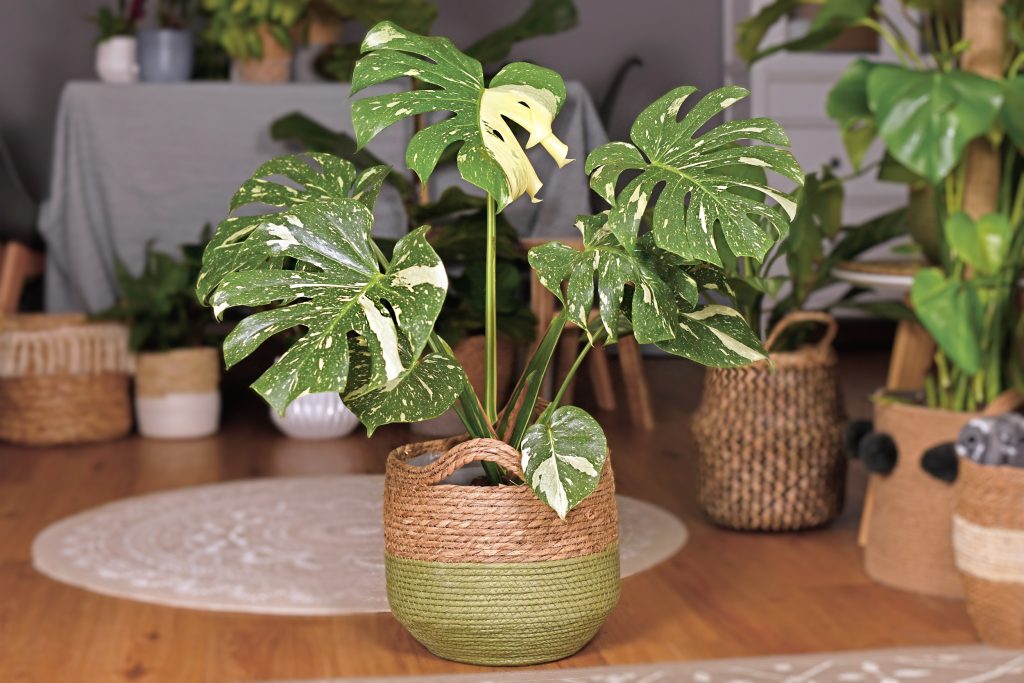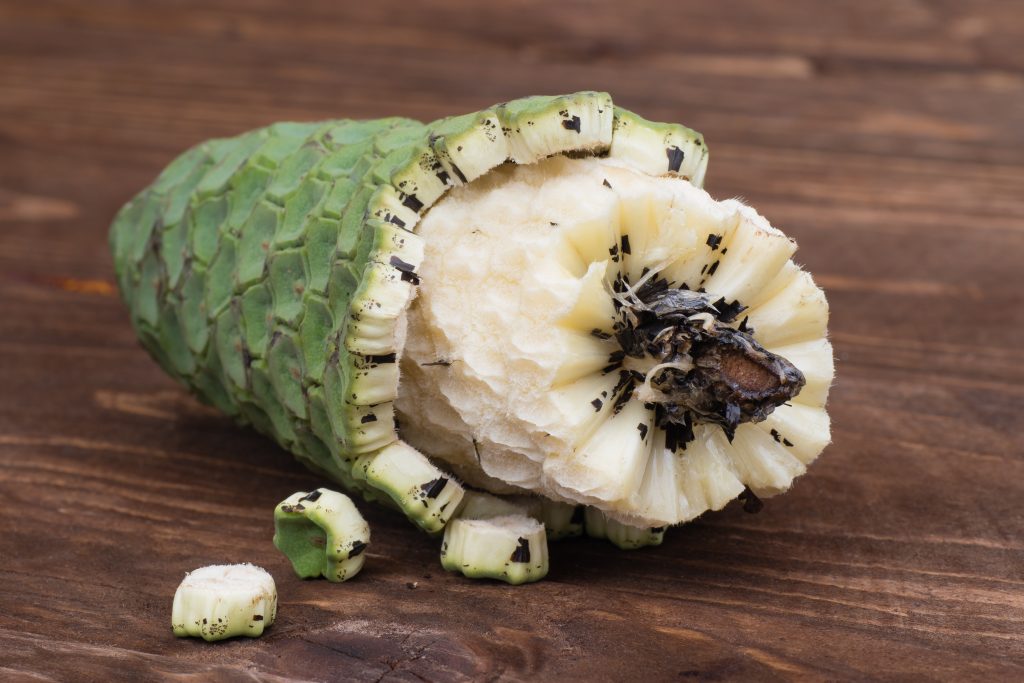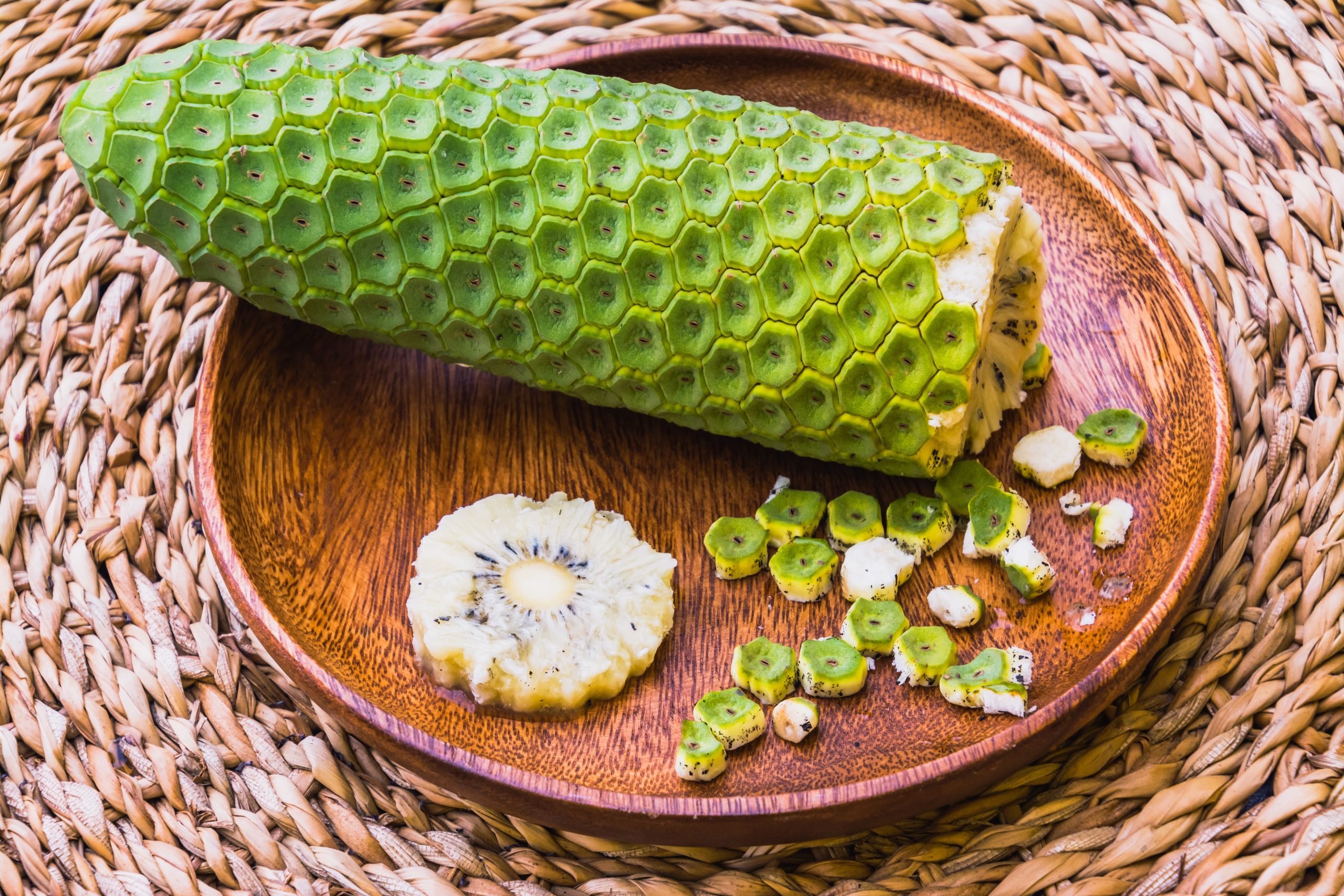If you're a fan of exotic fruits, you might want to give Monstera fruit a try. This tropical fruit comes from a climbing vine native to the rainforests of Central and South America. While the fruit's appearance seems unusual, the rough spiky exterior has a delicious interior packed with nutrients.
Table of Contents
What is a Monstera?
Monstera is a genus of tropical plants that belongs to the Araceae family, also known as the Aroid family. The most popular species of this genus is the Monstera deliciosa, also known as the Swiss cheese plant or Mexican breadfruit.
Monstera deliciosa plant is native to the tropical areas of southern Mexico and South and Central America, including Costa Rica, Guatemala, and Panama. Still, it is now widely cultivated worldwide as an ornamental plant.
It has the Swiss cheese plant name for its distinctive leaves, which are large and glossy and have natural holes and cuts, giving them the appearance of Swiss cheese.
Monstera deliciosa also produces fruit, a tropical fruit called a “Monstera fruit” or “Monstera deliciosa fruit.” The fruit is also known as a “Mexican breadfruit” or “Swiss cheese fruit” because it looks like a large ear of corn or corn on the cob covered in green scales. It’s also called Ceriman or fruit salad plant, thanks to its delicious fruit.
Monstera fruit is edible when ripe and has a unique and exciting flavor profile. It is often described as a combination of banana, pineapple, passion fruit, and mango flavors with a creamy texture and a slightly tart finish. However, the fruit should only be eaten when fully ripe as it can be toxic when unripe.
In addition to its unique flavor, Monstera deliciosa is a popular ornamental plant due to its attractive appearance. Its large, glossy leaves and natural holes make it a striking addition to any indoor or outdoor space. It is relatively easy to care for, making it a favorite among plant enthusiasts.
The History of Monstera
Deep in the heart of Central America, from the southern tip of Mexico to the sun-drenched landscapes of Panama, a unique species of plant lives and thrives – the Monstera. These titans can reach a staggering 20 meters in height, their leaves spreading to a meter long, creating an awe-inspiring sight.
Despite being domesticated, the indoor plant variants of the Monstera don’t skimp on size either, often growing up to an impressive ten feet – a true giant among houseplants!
One of the fascinating aspects of the Monstera is its youthful disguise. Immature leaves, devoid of their signature holes, resemble the heart-shaped leaves of a pothos or philodendron. This chameleon-like trait makes it quite a challenge to identify young Monstera varieties. However, as they age and their holes become more apparent, it’s easier to gauge their age and tell them apart.
Around the tender age of 3, the Monstera deliciosa bursts into bloom, presenting a delightful fruit – one of the key reasons this plant was first cultivated. Apart from its aesthetic appeal, the Monstera deliciosa has a rich past, serving as a source of food, medicine, and fibers in its homeland. Its roots have been woven into baskets and ropes.
Fast forward to the present day, and you’ll find Monstera plants thriving in Mediterranean climates and throughout Asia. In China, they’ve even become a symbol of longevity!
Monstera deliciosa first stole the show in England in the late 1700s, mesmerizing as a source of fruit and ornamental beauty. While they might bloom and bear fruit in a greenhouse, as houseplants, they’re less likely to do so.
But don’t be fooled – these plants are far from high maintenance. They’re impressively resilient and ideally suited to indoor life. Restricted by the confines of a pot, they grow just enough to make a bold, dramatic statement without overwhelming your living space.

Other Uses Throughout Time
Their aerial roots are essential for the plant’s survival and are used in Central and South America for weaving into rope, furniture, and baskets.
For example, locals gather the roots from Monstera plants climbing up trees in Guatemala to make timber furniture. This style of weaving using natural fibers is similar to how rattan is used to make wicker furniture. The result is a strong, sturdy piece of furniture that can support the human body and is favored for its sustainable materials and hand-crafted designs.
In Mexico, the Monstera roots also make baskets for food, clothing, and miscellaneous storage. So not only is this plant a natural wonder, and plays a significant role in the cultural and ethnic practices of various communities in Central and South America.
What Does a Monstera Taste Like?
In some cultures, the mature, ripe fruit of the Monstera plant is cooked and consumed as food. These fruits have a sweet, tropical flavor and a custard-like texture, similar to a cross between a banana and a pineapple.
Monstera fruit can be used in various dishes such as jams, desserts, and savory dishes when cooked. It is often used as a flavoring or ingredient in traditional dishes in parts of Latin America and the Caribbean.
How to Tell When Monstera is Ripe
Here’s how to tell when a Monstera fruit is ripe and ready to eat.
| Color | The fruit will turn from green to yellow or orange when ripe. |
| Texture | Ripe Monstera fruit should be firm but slightly soft to the touch. |
| Scent | The fruit will have a sweet, tropical fragrance when ripe. The unripe fruit has no smell. |
| Smoothness/Roughness | The surface of the fruit should be slightly rough but not too much. |
Note: Unripe Monstera deliciosa fruit contains high levels of oxalic acid, which can cause irritation and a burning sensation when consumed. This is why eating this edible fruit when it’s fully ripe is crucial, as the ripening process significantly reduces the oxalic acid content, making it safe to eat.
Can I Eat Raw Monstera?
It is not recommended to eat raw Monstera, as it contains calcium oxalate crystals that can cause mouth and throat irritation, as well as other unpleasant symptoms such as nausea, vomiting, and difficulty breathing. These crystals are present in various plant parts, including the leaves and stems.
Generally, it is best to cook or process Monstera before consuming it to ensure that the calcium oxalate crystals are broken down and rendered safe for consumption.
Note: It is always best to consult with a healthcare professional or a local expert before consuming any unfamiliar foods, especially if you have a history of food allergies or digestive issues.
Cooking with Monstera
While Monstera is primarily grown as an ornamental plant, its fruit is edible and is used in various cuisines. Here are some tips for preparing and cooking with Monstera:
- Start thoroughly washing the fruit under running water to remove dirt or debris.
- Cut off the stem and slice the fruit into pieces. The skin and seeds of the fruit are not edible and should be discarded.
- Some people prefer to wear gloves when handling Monstera, as the fruit can cause skin irritation in some individuals.
Monstera is commonly used in Latin American, Caribbean, and Southeast Asian cuisines. The fruit can be eaten raw or cooked and is often used in desserts, smoothies, jams, ice cream, and other sweet dishes.

Here are some dishes that use Monstera fruit:
Monstera Deliciosa Jam: If spreading a layer of your typical berry or apricot jam on toast is just too mainstream for you, buckle up! Prepare for a flavor expedition of sweet, tangy, and slightly banana-ish notes.
Monstera Cake: If you’ve ever looked at a Monstera plant and thought, “Hmm, that looks like it could be a cake,” then you might be a baking prodigy or… just very weird. This cake isn’t just about the sweet and tropical flavors of Monstera; it’s also a testament to your commitment to the cause of adventurous baking.
Delicious Monstera Salad: This isn’t just any fruit salad. It’s a salad that’s walked on the wild side, with the delightful Monstera giving it a robust, slightly nutty taste.
How to Store Monstera
To ripen Monstera fruits, it’s recommended to put them in a paper bag or keep them inside a covered glass jar. Only consume the ripe parts of the fruit, as the rest may not be safe or pleasant to eat.
Remember that the fruit will ripen from the end furthest from the stem and gradually progress towards the stem.
Will My Monstera Plant Fruit Indoors?
While Monstera plants can fruit indoors under the right conditions, they rarely do so. The plant requires a lot of light, warmth, and humidity to produce fruit, which can be challenging to provide indoors. Additionally, the plant may not receive the necessary pollination from insects, as these are typically found outdoors.
The fruiting cycle of a Monstera plant typically begins with the growth of a specialized leaf called a spadix, which emerges from the center of the plant.
The spadix is covered with small, white flowers that bloom over several weeks. Insects pollinate these flowers, and once pollinated, they develop into small, green fruit that grows larger over time.
As the fruit matures, it develops a rough, scaly texture and turns yellow. This process can take several months, and the fruit is typically harvested when it is fully ripe and has a sweet, tropical flavor.
Note: Monstera plants can take several years to mature and begin producing fruit, so even if you have ideal growing conditions indoors, it may still take some time before you see any fruit.
Nutritional Benefits of Monstera
Monstera fruits are a rich source of several essential nutrients, including potassium and vitamin C, which offer a variety of health benefits to the body.
Potassium plays a crucial role in maintaining proper fluid balance. It helps regulate blood pressure, promotes adequate muscle and nerve function, and supports healthy heart function. Potassium also helps prevent muscle cramping and can help reduce the risk of developing kidney stones.
Vitamin C is an important antioxidant that helps protect the body from harmful free radicals that can damage cells and cause illness, aid the production of collagen, boost the immune system, reduce inflammation, and promote healthy skin.
In Central America, Monstera fruits are also a natural laxative. This is because they are high in fiber, which helps promote regularity and prevent constipation. The roots of the Monstera plant are also used in infusions to reduce arthritic pain, as they contain anti-inflammatory compounds that can help reduce inflammation and joint pain.
In China, portions of the Monstera plant are used to relieve symptoms associated with fevers, coughs, and infections. This is because the plant contains several bioactive compounds, including alkaloids and flavonoids, that have been shown to have antibacterial and antiviral properties.
Where to Purchase Monstera Fruit
Unfortunately, Monstera fruit is not widely available, and it can be challenging to find in most parts of the world. The fruit is considered a luxury item in many countries.
If you want Monstera fruit, your best bet is to check with specialty fruit stores, gourmet food markets, or high-end grocery stores. Additionally, you may be able to find it at a local farmers’ market or specialty produce store, mainly if you live in a tropical or subtropical region.
The most likely places to find Monsetra fruit are southern Mexico, Nicaragua, Costa Rica, Belize, and Guatemala. The fruit is most commonly harvested in the late summer or early fall months but may be available at different times of the year, depending on the region.

